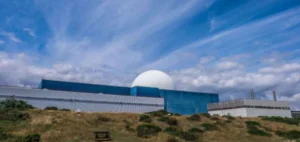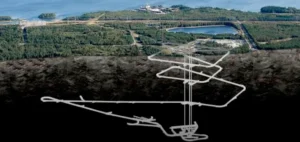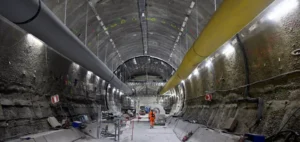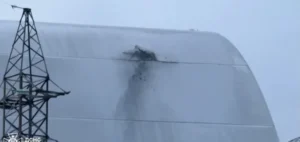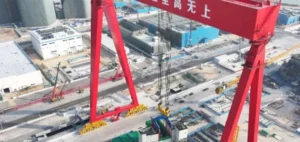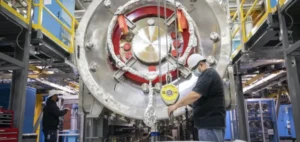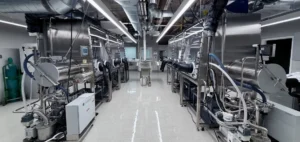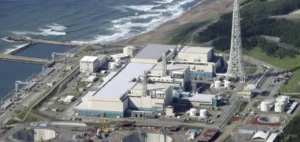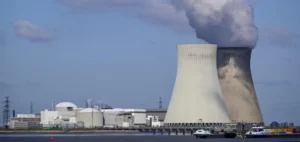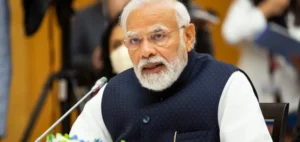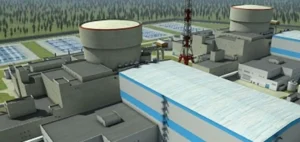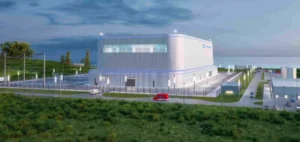In China, the country expects nuclear power to expand in the coming years, even though fuel prices are unstable.
The Chinese situation
In China, the development of nuclear power slowed down after the Fukushima accident in Japan. However, like many other countries, Beijing is reviving this energy. Currently, China has the second largest civil nuclear sector in the world, after the United States.
However, it will only account for 5% of the country’s electricity consumption in 2021. China currently has 54 commercial nuclear reactors. These are located in small coastal towns.
26 reactors are currently under construction, and many projects for long-term locations are underway. Nuclear power represents a great opportunity for China’s coastal regions. Indeed, China suffers from a significant mismatch between electricity demand and supply.
Specifically, the industry is mostly located in the eastern part of China, along the coast. The energy production resources, on the other hand, are far from the coast. Ultra-high voltage lines are expensive and difficult to implement.
Nuclear power would meet the high energy demand of coastal industries in a local, affordable, and low-carbon manner. In the late 2000s, planning documents set a target of 70GW of nuclear power by 2020, and 120GW by 2030. In fact, China’s total nuclear capacity will only reach 51GW in 2020.
A change in posture
The country is now targeting only 75GW of nuclear power by 2025. China is therefore using coal massively. It uses it in particular for its industry, with no less than 1000GW of installed capacity in 2020.
One of the main reasons for the delay of nuclear development in China is none other than the Fukushima accident in 2011. As a result, China’s National Nuclear Safety Administration (NSSA) ordered a moratorium on all new nuclear construction. But the NSSA was re-evaluating and improving national safety standards.
It suspended the construction of power plants in the interior regions. Thus, when the construction was authorized, many projects became null and void. In Hunan, Sichuan and Jiangxi provinces, the buildings and earthworks of several projects were in the completion phase.
However, the projects were given an obligation not to proceed with construction. In addition, the NNSA decided to abandon the generation II plants in favor of the third generation plants with reinforced safety after Fukushima. At the time, China did not have the know-how for this type of reactor.
China could accelerate the development of civil nuclear power in the coming years. In January 2021, the first domestic Hualong One reactor began commercial operation. Several factors were pushing Chinese decision-makers to develop their own reactor.
A distant goal
According to China, this choice was the result of the inability of the West to meet the deadlines and budgets for the construction of the reactors. In addition, the trade war with the United States made Chinese nuclear operators vulnerable. The coastal provinces are experiencing a new wave of construction and site approvals since the first Hualong One reactor went into operation.
Shandong Province, for example, is planning 12 new Chinese technology reactors in its latest five-year plan. The plants approved today will have a connection to the grid within at least 5 years. Thus, during this time interval, coal will have the upper hand.
China faces several obstacles to nuclear development. Indeed, the country does not have a reprocessing facility at the moment. The plants continue to store spent fuel in pools or in dry casks on site.
On the other hand, the NNSA maintains the ban on the construction of nuclear power plants in the interior provinces. However, the inland provinces have significant solar and wind capacity. However, in the absence of a constant energy source, they will resort to gas or coal, which are more carbon intensive.
Finally, China will have to deal with a considerable amount of construction if it is to meet its environmental ambitions. The average of 10 studies estimates that nuclear will provide about 16% of China’s electricity in 2050. Reaching this level would require the construction of more than 10 plants per year, every year, for the next few decades.




